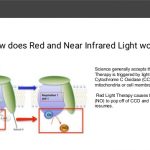Last Updated on 11 months by Francis
Negative ions are charged particles that are naturally found in the environment. Thunderstorms are one of the most powerful natural phenomena that produce an abundance of these negatively charged ions. In this topic, we will be exploring the effects of negative ions during thunderstorms on the environment and their potential benefits for human health.
Contents
Understanding Negative Ions
Before we delve into the impact of negative ions during thunderstorms, it’s essential to understand what they are. Negative ions are invisible, odorless, and tasteless molecules that occur naturally in the environment. They are created when atoms gain or lose electrons, and they carry a negative charge. Negative ions are abundant in nature, particularly in places such as waterfalls, forests, and beaches. They are known for their ability to improve mood, boost energy levels, and reduce stress.
The Science behind Negative Ions
According to scientific studies, negative ions work by attaching themselves to positively charged particles such as dust, pollutants, and bacteria, causing them to become too heavy to float in the air. As a result, they fall to the ground, reducing the level of airborne contaminants. Negative ions also have an impact on the body, promoting the production of serotonin, a neurotransmitter that regulates mood, appetite, and sleep. They also increase the flow of oxygen to the brain, improving mental alertness and concentration.
What Happens during Thunderstorms?
Thunderstorms are a natural phenomenon that occurs when warm, moist air rises and cools, forming clouds. As the air rises, it creates an electrical charge, which is discharged as lightning. Thunder is the sound created by the rapid expansion of air after the lightning bolt heats it to a high temperature. Thunderstorms are also responsible for creating negative ions, which can have a range of effects on the environment and our bodies.
How Thunderstorms Create Negative Ions
During a thunderstorm, lightning strikes the ground or air, creating a discharge of electrical energy. This discharge ionizes the air, creating both positive and negative ions. The negative ions are attracted to positively charged particles in the air, such as dust and pollutants, causing them to become too heavy to remain airborne. The result is a reduction in airborne contaminants, which can have a positive impact on our health.
The Benefits of Negative Ions during Thunderstorms
Negative ions produced during thunderstorms have a range of benefits. They can improve mood, reduce stress levels, and boost energy levels. Negative ions can also improve mental clarity, making it easier to concentrate and focus. Additionally, they can improve the quality of air by reducing the level of airborne contaminants.
Key takeaway: Negative ions are naturally occurring molecules that carry a negative charge and can have numerous health benefits, including improving mood, reducing stress levels, and boosting energy levels. Thunderstorms are a natural phenomenon that creates negative ions, which can improve the quality of air by reducing airborne contaminants and have a positive impact on physical and mental health. However, while negative ions are important, excessive exposure to electromagnetic fields (EMF) from electronic devices can also have a negative impact on our health.
The Impact on Physical Health
Negative ions produced during thunderstorms can have a positive impact on physical health. They can promote better sleep, reduce the severity of asthma symptoms, and improve lung function. Negative ions can also help to reduce headaches and migraines, improve circulation, and reduce inflammation.
The Impact on Mental Health
Negative ions produced during thunderstorms can also have a positive impact on mental health. They can reduce stress levels, improve mood, and promote feelings of well-being. Negative ions can also help to reduce symptoms of depression and anxiety, making it easier to cope with mental health conditions.
Misconceptions about Negative Ions during Thunderstorms
Despite the numerous benefits of negative ions during thunderstorms, there are also some misconceptions. One common misconception is that negative ions can be harmful to our health. While it is true that excessive exposure to negative ions can cause some negative effects such as headaches and dizziness, the levels of negative ions produced during thunderstorms are not harmful.
The Role of EMF
Another misconception is that negative ions are the only factor to consider when it comes to our environment and health. While negative ions are important, electromagnetic fields (EMF) can also have an impact on our health. EMF is created by electronic devices such as cell phones, computers, and televisions. Excessive exposure to EMF can cause a range of health problems, including headaches, fatigue, and sleep disturbances.
FAQs: Negative Ions During Thunderstorms
What are negative ions?
Negative ions are tiny particles that have an extra electron attached to them which gives them a negative charge. These ions can be found in nature, such as near waterfalls, forests, and beaches. They are also produced by devices such as air purifiers and salt lamps.
How are negative ions produced during thunderstorms?
During a thunderstorm, lightning creates an electric field which causes the air to break apart into positive and negative ions. This process is called ionization. The negative ions produced during a thunderstorm are carried by the wind and can reach areas far from the storm.
What are the benefits of negative ions during thunderstorms?
Negative ions have been known to improve air quality by attaching to air pollutants and removing them from the air. They can also help to reduce stress and improve mood. Some studies have even suggested that negative ions can help to boost the immune system and improve overall health.
Can negative ions be harmful during thunderstorms?
While negative ions are generally considered safe, they can be harmful if they are produced in large quantities. In some cases, negative ions can cause respiratory problems, headaches, dizziness, and other health issues. However, the amount of negative ions released during a thunderstorm is usually not enough to cause harm.
How can negative ions during thunderstorms be harnessed for our benefit?
There are many ways in which negative ions can be harnessed for our benefit, such as through the use of air purifiers and salt lamps. However, the best way to benefit from negative ions during thunderstorms is to spend time outdoors. By spending time outside during a thunderstorm, you can breathe in the negative ions and enjoy their many benefits.







